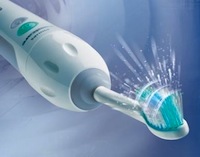The following is a guest post by Kevin Bowen.
To understand how federal technology grants can improve the bottom line of a small business, we need to revisit ancient times – those days when primitive technology still forced sleepy people to move one hand when brushing their teeth.
It was a barbaric era. The nation’s computer users were still oppressed by floppy disks. And the Internet had not yet eliminated our need for memory. It was also an era of rampant gingivitis and tooth decay.
Where people saw rotting teeth, the federal government saw a market to advance technology, make money and improve lives. When the company GemTech applied for a grant from the Small Business Innovation Research program, it received a $50,000 grant in 1990 and a $500,000 grant in 1992 for a “sonic toothbrush.†The result was the device that so many people use today – a stronger, cleaner toothbrush.
Thanks to an influx of federal research dollars, we entered an era of whiter teeth and happier dentists. Even happier were the company owners. The company changed its name to Optiva in 1995 and was later sold to Phillips. Sales have reached 1.5 million worldwide, while the company now has a $300 million value and more than 500 employees.
Collaboration and public-private partnerships are a current trend in business and government circles. Small companies that offer innovative technological solutions can seek federal grant funding under the Small Business Innovation Research and Small Business Technology Transfer program. STTR in particular looks to support collaboration with government or university researchers to commercialize technological discoveries. Here are four reasons that an innovative small business should consider collaboration:
Uncle Sam Funds It – The federal government funds innovative technological companies through its SBIR program and business-academia collaborative research through its STTR program, run through the Small Business Administration. These programs issued $172.8 million in 2011 and have issued more than $2 billion in past years.
States Fund It – Following the lead of the federal government, some states have developed their own programs for business-academia collaboration. For instance in 2005, Texas developed the Emerging Technology Fund. The program makes state funding available to companies working with academic research institutions to develop technology that can be commercialized. Through 2011, ETF reported investing $163.9 million in 133 high-tech companies.
Loosening Rules – An October 2011 Presidential memorandum instructs federal departments to increase the pace of technology transfer of federal patents to the private sector. One result is the December 2011 decision by the U.S. Department of Energy to create a pilot program to give businesses and entrepreneurs greater access to its unlicensed patents, including the ones owned by its system of national laboratories.
Gold in Them There Hills – Companies have had success bringing cutting-edge products to market using federal funds. Products include a GPS system that helps position satellites. SBIR/STTR products include the sonic toothbrush, a GPS system that helps position satellites, and many high-tech projects.
These federal avenues might be unfamiliar to some small business owners. However, if you have the talent for technological innovation, the government is likely looking for you.
Kevin Bowen is a writer working with OppMetrix, based in Dallas, Texas. The OppMetrix smart software solution connects users to federal contracts, federal grants, private grants, federal agency procurement forecasts, and market intelligence and analytics. The system delivers the right federal opportunities to large enterprises, small businesses, non-profits, local and state governments, foundations, non-profits, universities, hospitals, medical facilities, research institutions, and other organizations.
